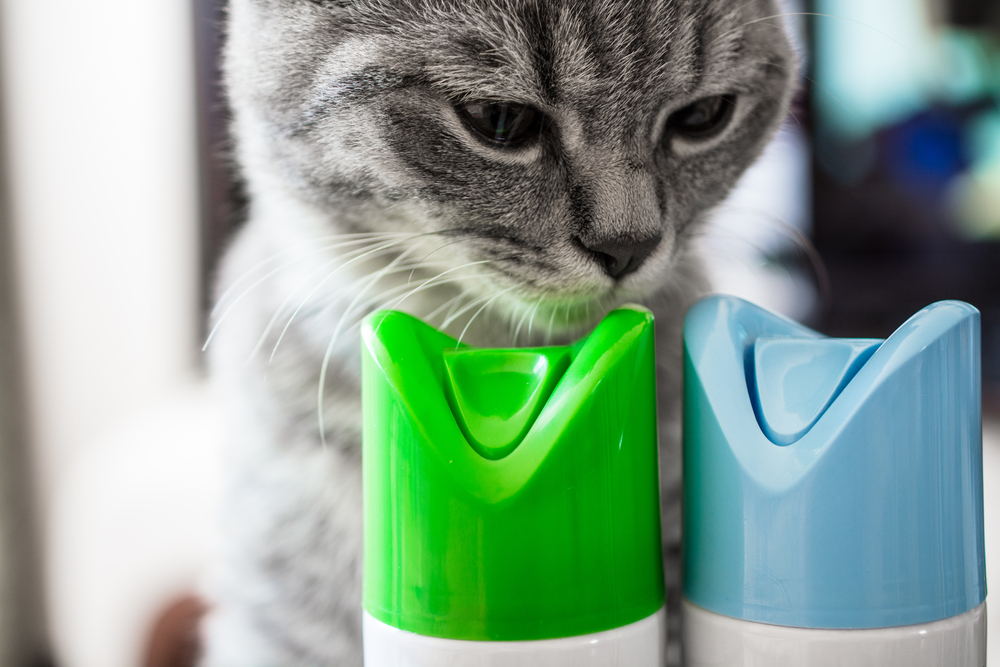Pets all too often stick their noses into trouble, whether it’s an ant hill, mouse poison, antifreeze, or your secret chocolate stash. While the popular saying is that curiosity killed the cat, dogs are more likely to get into mischief with toxic substances, since cats tend to have more discerning palates, and don’t scarf down everything in sight. But, whether you have a dog or cat, you naturally want to keep her safe from harm, and avoid early morning emergency veterinary visits. Sometimes, though, pets go against our wishes and find trouble, like a pup named Mocha. Let’s take a look at her frightening brush with raisin toxicity.
Chocolate Labradors don’t need chocolate
At 12 weeks old, Mocha the chocolate Labrador retriever was a sweet puppy, but goodness, she found a way into everything. No shoe, sock, phone cord, candy wrapper, or dropped morsel of food was safe from this pup, no matter how well her owners hid these items. A curious puppy, Mocha has had a variety of objects pried out of her slobbery jaws, ranging from rocks and mulch, to paintbrushes and glue sticks.
Mocha’s owners, who thought their pup was simply going through a teething phase, and would eventually stop chewing everything in sight, dealt with the destruction as it came, rather than taking appropriate steps to stop it in its tracks. Unfortunately, they did not do their breed research before bringing home their fluffy bundle of joy, and did not realize Labs are notorious for snacking on everything, edible or not.
As Mocha grew tall enough to swipe items from kitchen counters, her snack-sneaking increased. No place was safe from her questing nose, which created an almost life-threatening situation for our sweet pup.
One day, after participating in a school fundraiser, Mocha’s owner rushed off to chauffeur her children to multiple activities, leaving her prized box of chocolate-covered raisins on the kitchen counter. The ever-inquisitive Mocha sniffed out the sweet chocolate scent and, taking advantage of the lack of supervision, snatched the raisins off the counter, and devoured the entire box, plastic wrapping and all.
After returning home, Mocha’s owner discovered the candy binge aftermath and, fortunately, quickly called us, frantic with worry about potential toxicity. After verifying the amount eaten and Mocha’s size, we weren’t concerned with chocolate toxicity, but we were definitely concerned about the raisins, and we insisted that Mocha be seen immediately for treatment.
Once Mocha arrived at Caldwell Animal Hospital, we quickly administered medication to make her vomit, to remove as much of the toxic substances as possible. While the small, three-ounce box of chocolate-covered raisins likely wouldn’t cause any signs of theobromine toxicity or caffeine consumption, the raisins were a different story. Not much is known about raisin and grape toxicity in pets, other than it varies from pet to pet. Some dogs can suffer from kidney damage after eating a few grapes, while other dogs can eat large amounts multiple times and show no illness.
Since we were unwilling to take any chances with Mocha’s health, we performed blood work to check her kidney function, and placed an intravenous catheter to bolus fluids through her system. Although her blood work appeared normal, we still hospitalized her to flush out her kidneys. We also administered activated charcoal, which binds to toxic substances, in the hopes of reducing any potential damage from the raisins.
After 24 hours, Mocha was still bright and alert, and did not appear to be any worse for wear after her chocolatey raisin binge, but we repeated her blood work to confirm her status. Both kidney values were in the normal range, which was excellent news. As Mocha did not show any signs of chocolate toxicity or kidney damage, we released her to return home, with instructions to invest in a training class, and baby gates to keep this fortunate pup safe.
Scary situations like Mocha’s occur frequently—213,773 times per year, according to the ASPCA Animal Poison Control Center. While not every phone call to the ASPCA merits emergency treatment, many pets get into mischief and ingest toxic substances, prompting panicked calls to animal poison control hotlines. Chocolate may be a well-known toxin for dogs, but the ASPCA still receives so many calls that they’ve placed chocolate in its own category, which ranks fourth on the list of most frequent toxin calls. Other common household toxins pets are exposed to include:

- Over-the-counter medications, such as Tylenol, Aleve, or ibuprofen
- Human prescription medications (e.g., anti-anxiety medications, cardiac medications, and pain medications)
- Veterinary products (e.g., overdose of flavored tablets, or medication given to the wrong pet)
- Food items, including onions, garlic, macadamia nuts, xylitol, yeast, and alcohol
- Household items, such as paint, glue, and cleaning supplies
- Rodenticides
- Insecticides
- Plants, including lilies, amaryllis, sago palm, and many others
- Garden products, including fertilizers, herbicides, and cocoa mulch
Many pets encounter toxicity through medications, accidentally or on purpose. To help ease their pet’s pain, diarrhea, or vomiting, many pet owners turn to over-the-counter medications or their own prescriptions, which can lead to kidney or liver failure or other life-threatening illness. Occasionally, pets can also experience toxicity with their own medications, such as doubling up on a dose, or when a cat is given a canine flea preventive. Essentially, a product that contains a chemical—or a raisin—may be harmful to your pet, so take special precautions to keep your furry friend safe.
If you suspect your pet has eaten something toxic, waste no time in calling us at 828-754-4545. You may not be certain, but it’s always better to be safe than sorry in such a situation.







Leave A Comment